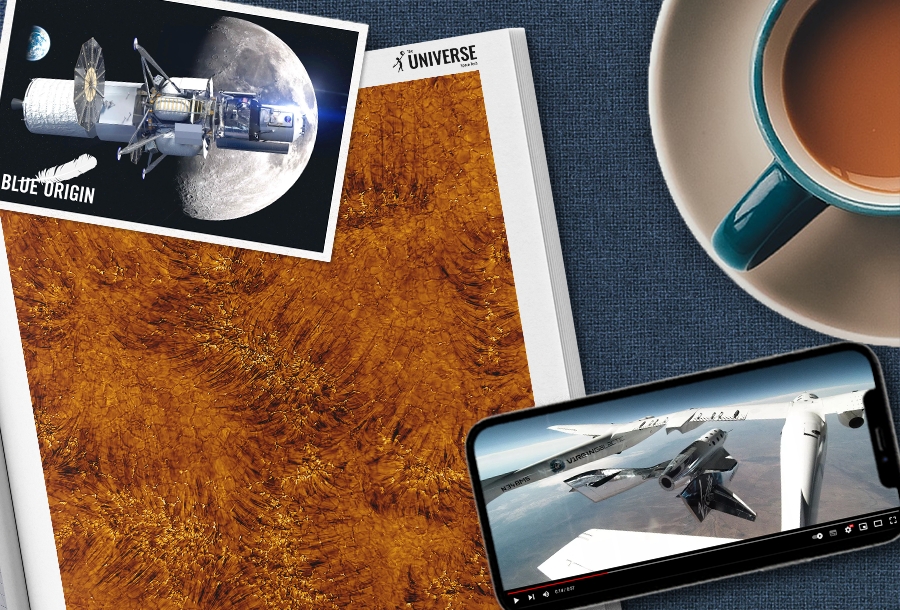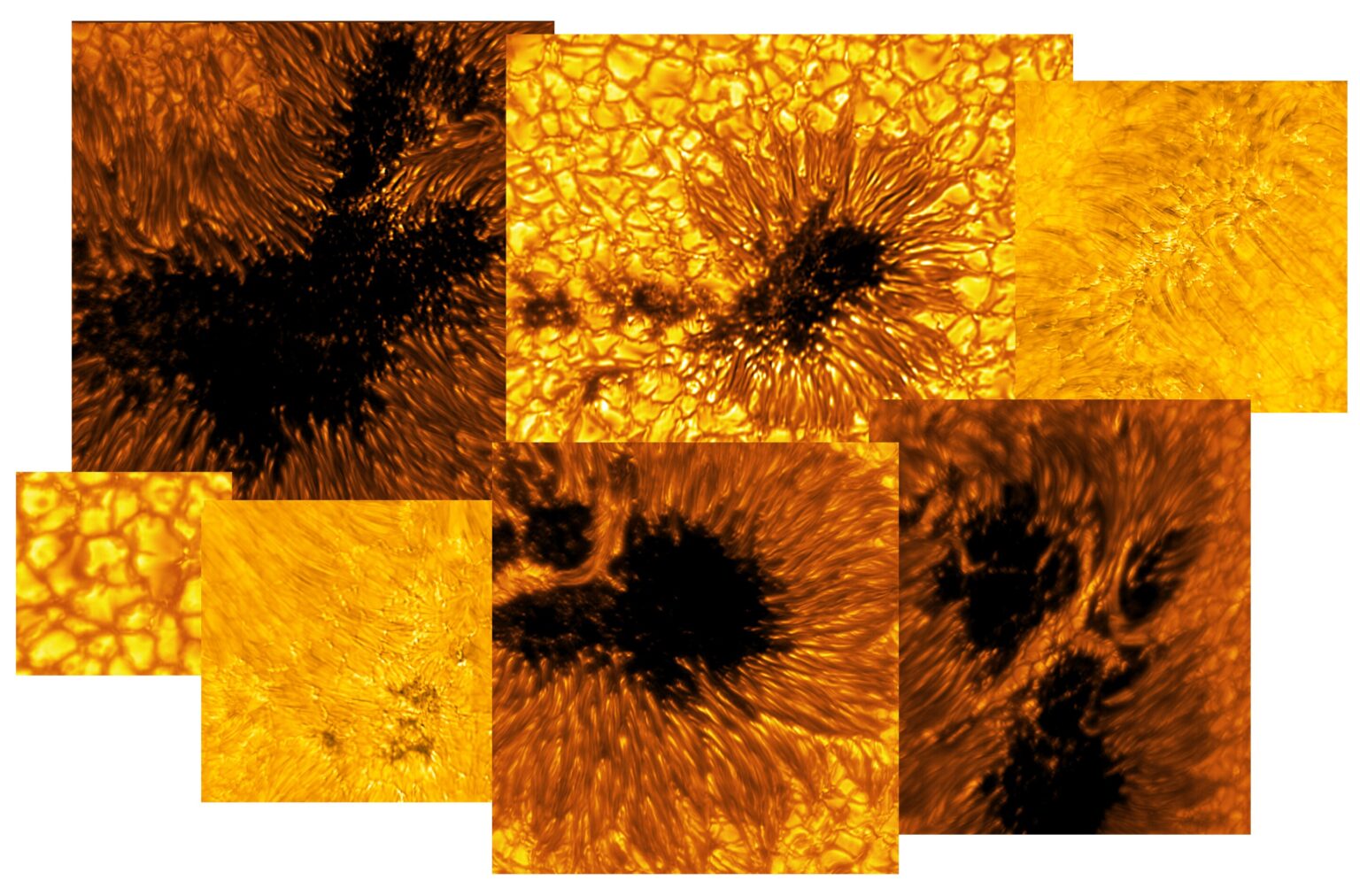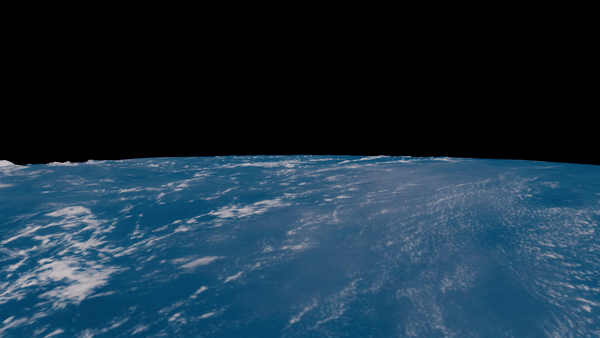Selection of the most interesting space news for the week: James Webb finds traces of huge stars in the early Universe; Virgin Galactic has announced when it is ready to start commercial flights, and we talk about how space development helps to look for people under the rubble.

“Any man could, if he were so inclined, be the sculptor of his own brain.”
― Santiago Ramon y Cajal, Advice for a Young Investigator
Virgin Galactic space plane successfully makes test flight
Virgin Galactic’s SpaceShipTwo space plane successfully separated from the carrier aircraft on May 25 and made a test flight. Four employees of the company got out of the atmosphere on it. Now everyone is waiting for the start of tourist flights. Overall, this was its fifth flight. Whether the space is reached at the same time is a debatable question. According to the international classification, its border runs along the “Karman line”, which is located at an altitude of 100 km. However, according to the classification of the American Air Force, this border is located at an altitude of only 80 km.
Anyway, now Virgin Galactic is ready to start commercial flights, which they have been promising their customers for a very long time. The queue of those who are waiting for a flight into space is several hundred people. It is expected that VSS Unity will make the first flight with tourists in June, and then they will occur monthly.
NASA predicts how many people will die due to air pollution
Danish scientist Ulas Im, together with his colleagues from NASA’s Goddard Institute for Space Research, predicted how people’s health would be affected by emissions of fine particulate matter into the air in the future. They came to the conclusion that even in the best case, up to 4 million people around the world would die due to diseases associated with them. It is known that fine particles, which are only a few microns or even tens of nanometers in size, pose the greatest danger to human health. Due to their size, they easily penetrate into human lungs and get stuck in their mesh surface. This can lead to poor breathing and, in the long run, to cancer and a number of other serious diseases.
Together, Im and NASA have developed a global model of air pollution that includes climate change, measures to reduce particle emissions and changes in the composition of the population. The model shows a bleak future, especially for Asian countries. In Europe, the situation with emissions is not so tense.
Richard Branson’s company has gone bankrupt and competitors are buying up its remains
Virgin Orbit, the space company of billionaire Richard Branson, has announced that it is finally ceasing its activities, declaring itself bankrupt and selling off assets at auction. They are being bought by three former competitors: Rocket Lab, Stratolaunch and Vast Space. In 2022 Virgin Orbit faced financial and technical problems. To overcome them, it borrowed large sums and hoped to return them after the start of launches from the Cornwall cosmodrome in the UK. But the launch carried out in January ended with an accident. The rocket with satellites fell into the Irish Sea, which finally undermined investor confidence in this brainchild of Richard Branson. In March, Virgin Orbit sent most of its employees on indefinite leave, effectively dismissing them.
Blue Origin to build second lunar module for Artemis program
The “national team” led by Blue Origin (it also includes Lockheed Martin, Draper, Boeing, Astrobotic and Honeybee Robotics) won the competition to create a lunar lander for the needs of the Artemis program. It will be used during the Artemis V mission. According to an official NASA press release, the Blue Origin-led team will receive a contract worth USD 3.4 billion. It includes the construction of a lunar module and two flights — a demonstration unmanned test, followed by its use during the Artemis V mission. Its implementation is planned for the end of the 2020s.
Dead Giants: James Webb finds traces of huge stars in the early Universe
The James Webb Space Telescope (JWST) has found evidence of the existence of giant stars in the early Universe, their mass thousands of times greater than the solar one. Certainly, these giant luminaries could be formed only at an early stage of the existence of the Universe, the conditions in which were very different from modern ones. Those days are long gone, and with them the era of giant stars. All that remains for astronomers to do is to look for chemical traces left by them. In search of such traces, scientists aimed JWST at the galaxy GN-z11. This is one of the most distant and ancient galaxies known to astronomers. We see it as it was just 440 million years after the Big Bang. Spectral analysis of GN-z11 revealed an unusually high ratio of oxygen and nitrogen. According to the researchers, such a high concentration can be explained by the combustion of hydrogen at extremely high temperatures, which is possible only in the cores of giant stars.
Photo of the week

The DKIST Solar Telescope (Daniel K. Inouye Solar Telescope) in Hawaii has captured amazing images of our star with maximum approximation. The photos show incredibly bright details of the Sun’s surface.
Interesting figure — 2000 km

The eruption of the underwater volcano Tonga in January 2022 was so powerful that it generated plasma bubbles that caused disruption of radio communications in outer space. The eruption of Tonga turned out to be so powerful that it created a strong air pressure that disrupted the Earth’s ionosphere — one of the highest layers of the earth’s atmosphere, extending at an altitude of 80 to 1000 km. Scientists have long assumed that volcanic activity can disrupt the ionosphere, and Tonga has demonstrated this in practice.
In the new study, scientists used the Japanese Arase satellite to detect equatorial plasma bubbles and the national Himawari-8 satellite to monitor atmospheric waves. Ground stations were used to track the movements of shock waves in the ionosphere. Scientists discovered that after the shock wave from the Tonga eruption hit the ionosphere, they discovered equatorial plasma bubbles that stretched into space to a height of at least 2000 km. This was much further than the theoretical models suggested.
Something to read on the weekend

When a large building collapses, it is crucial to find people trapped under the rubble as quickly as possible. Scientists affiliated with NASA developed a device ten years ago, which can accomplish this task rapidly. The editors of The Universe Space Tech talk about the FINDER microwave radar, which is able to “feel” the slightest movements through the thickness of wreckage.
Space has long become an integral part of our lives. It’s not just about technologies that rely on satellites (such as GPS or global weather forecasts), but also about everyday things that we now take for granted. And cars are no exception. In this article, we will talk about five automotive innovations that have emerged thanks to NASA.
Follow us on Twitter to get the most interesting space news in time
https://twitter.com/ust_magazine

